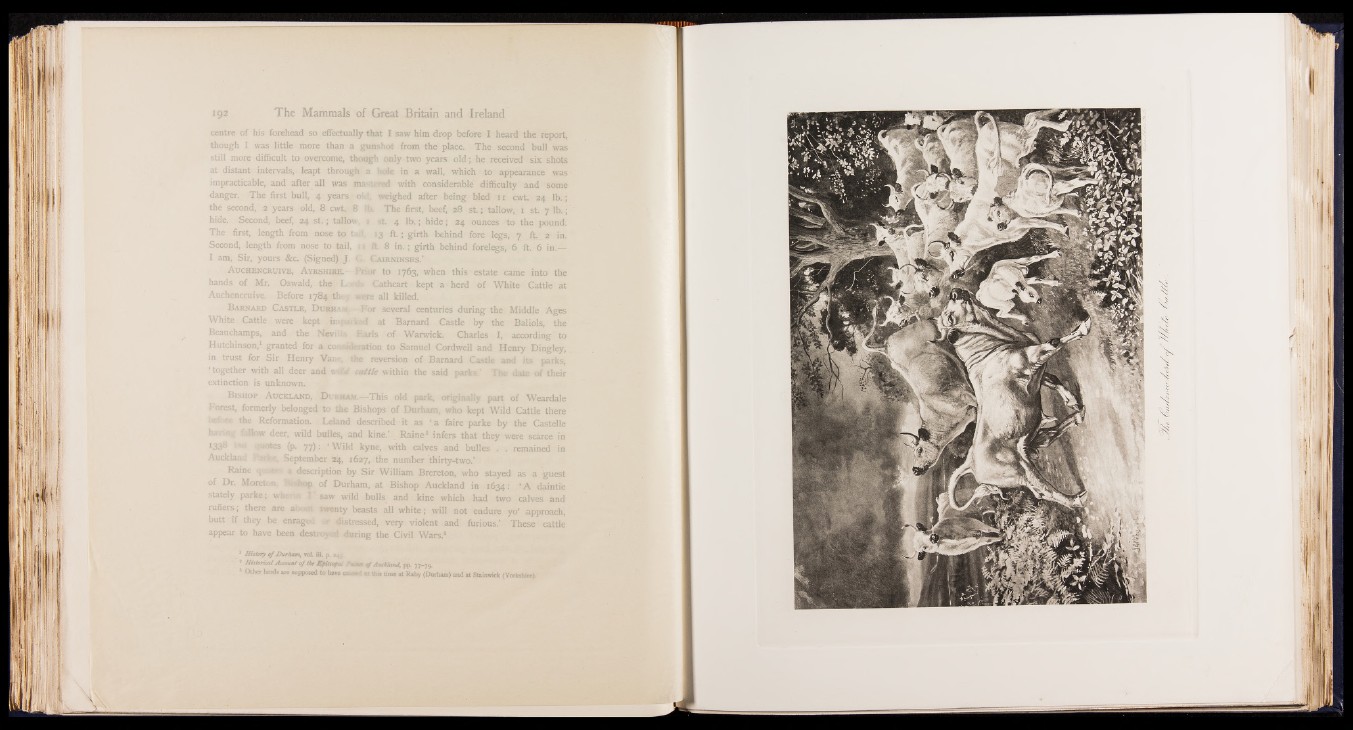
overcome, though only two years o ld ; he received six shots
leapt through a hole in a wall, which to appearance was
ter all was mastered with considerable difficulty and some
ill, 4 years old» weighed after being bled 11 cwt. 24 lb .;
old, 8 cwt 8 Ik The first, beef, 28 s t.; tallow, 1 st. 7 lb .;
24 s t .; tallow, . st. 4 lb .; hide; 24 ounces to the pound,
m nose to tail, »3 f t . ; girth behind fore legs, 7 ft. 2 in.
nose to tail, n ft. 8 in .; girth behind forelegs, 6 ft. 6 in.—
(Signed) J. G. Cairninses.’
Ayrshire. Poor to 1763, when this estate came into the
ild, the Lords Cathcart kept a herd of White Cattle at
e 1784 they were all killed.
e , D u r h a m . -For several centuries during the Middle Ages
kept in > fur teed at Barnard Castle by the Baliols, the
he Nevihs Earls of Warwick. Charles I, according to
for a consideration to Samuel Cordwell and. Henry Dingley,
nry Vane the reversion of Barnard Castle and its parks,
tier with all deer and U’iiei cattle within the said parks.' The date of their
ion is unknown.
ishop A uckland, Durham.— This old park, originally part of Weardale
, formerly belonged to the Bishops of Durham, who kept Wild Cattle there
the Reformation. Leiand described it as ‘ a faire parke by the Castelle
fallow deer, wild bulles, and kine.’ Raine2 infers that they were scarce in
quotes (p. 77): ‘ Wild kyne, with calves and bulles . . remained in
md Paries, September 24, 1627, the number thirty-two.’
aine . .?? • a description by Sir William Brereton, who stayed as a guest
• Moretoji, IWshop of Durham, at Bishop Auckland in 1634: ‘ A daintie
I saw wild bulls and kine which had two calves and
; there are twenty beasts all white; will not endure yor approach,
if they be enraged m distressed, very violent and furious.’ These cattle
to have been destroyed during the Civil Wars.8 1
1 History o f Durham, vol. iii. p. a^J.,
Historical Account o f the Episcopal Paints o f Auckland, pp. 77-79,
■ Other herds are supposed to have eaueed u this time at Xabjt (Durham) and at Staumick (Yorkshire).